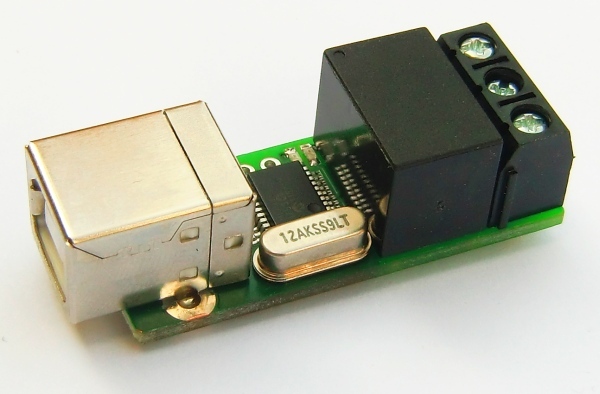Your shopping cart is empty!
Categories
- 3D Printing and Plastic peripherals (8)
- 433Mhz and Lora (9)
-
Amateur Radio (651)
- - Antenna Analyzer (12)
- - APRS (12)
- - ATU (5)
- - CW (1)
- - Digital Modes (9)
- - DMR (4)
- - Echolink (10)
- - Enclosure (13)
- - Eshail-2 (QO-100) (67)
- - GPS (8)
- - iGate (1)
- - Microcontrollers (43)
- - Microphone (1)
- - Power Supply (7)
- - Programming Cable (6)
- - QRP (9)
- - Radio interface (21)
- - Receiver (9)
- - Repeater (4)
- - RF Amplifiers (20)
- - RF Kits (19)
- - RF modules (116)
- - Rotator (1)
- - SDR (75)
- - Spectrum Analyzer (4)
- - SWR (9)
- - Transceiver (59)
- - WSPR (5)
- Antennas and Acc (320)
- Audio and Video (28)
- Bargain Box (1)
- Battery (3)
- Bluetooth (11)
- Cables (37)
- Computer Peripherals (104)
- Connectors (90)
- Data acquisition (1)
- Display (2)
- Electromechanical (25)
- Enclosure (12)
- GPS (6)
- Hardware (3)
- Home Automation (128)
- Inverter (9)
- Liquid (7)
- Lora (8)
- Microcontrollers (119)
- Modbus (3)
- MQTT (14)
- Network Radio (3)
- Networking (8)
- Power (133)
- Power supply (49)
- Radio Interface (17)
- RF Modules (142)
- ROIP (2)
- Satellite (93)
- Security (13)
- Sensor (17)
- Solar (14)
- Test and Measurements (66)
- Tools and Equipment (8)
- VOIP (10)
- Weather (1)
PUSBIO1R - Multifunction relays with USB interface
Product Code: PUSBIO1R
Availability: 1
Availability: 1
Price: R401.35
Ex Tax: R349.00
Ex Tax: R349.00
Qty:
- OR -
Add to Wish List
Add to Compare
Add to Compare
PUSBIO1R - Multifunction relays with USB interface (Ideal for Radio PTT interface from laptop)

Multifunction relays with USB interface - PUSBIO1R belongs to a new series of USB - relay and USB - I / O converters. The modules are equipped with a power relay and isolated inputs. To control the application serves PUSBIO - Control Software.
Modules PUSBIO1R, PUSBIO4R and PUSBIO8R are the first representatives of a new product line. As in the case of basic modules PUSBIO is here used as the basis of Microchip MCP2200 circuit that ensures safe and trouble-free operation. Circuits are of course already programmed and configured so that the circuits can only connect to a PC and used immediately. MCP2200 circuits offer up to eight programmable I/O (input / output) pins, plus the UART serial port, a RS232 TTL levels, including control pins RTS and CTS. All I/O pins are freely configurable and easy to use application with DLLs.
Basic features USBIOxR Series modules:
- Up to eight powerful relays 3A/125V
- Up to eight galvanically isolated inputs with wide voltage range
- Dielectric strength up to 3,000 VRMS inputs with CMR 10kV/μs (type)
- Inputs support both logic level analog voltage and mechanical / electrical contact (routed supply voltage +5 V)
- Control and monitoring of the USB port with USB B-type connector
- Possibility of automatic output reaction to the change in input
- Support for computation of changes at input
- Operational temperature range from -20 to +70 ° C
- Powered directly from the USB port on the PC
- Control Program PUSBIO Control Software for Windows Free
Module PUSBIO1R
PUSBIO1R module contains one power relays. The module is designed for control of simple processes. It is also on the board in the form of solder pins brought out an integrated serial port - UART (TxD, RxD and GND), the module can therefore be used also as a converter from USB to serial port and extended to other functions (such as temperature). This port is available for Windows as another standard (virtual) serial port, and allows communication from any application.
Application PUSBIO - Control Software
Application PUSBIO - Control Software (hereinafter referred to as Control Software) is a specially designed program for the control and monitoring of a number of modules PUSBIO and PUSBIOxR. The application is available as open-source and is also easily modifiable (by changing the configuration XML file) to be used in conjunction with other modules.DOCUMENTS TO DOWNLOAD:
 |
pusbioxr_control_software.zip | |
| Universal software for Windows for all I / O modules from the series PUSBIO and PUSBIOxR | ||
| File size: 979.41 kB | ||
|
 |
pusbioxr_console.zip | |
| Console software for Windows. | ||
| File size: 119.39 kB | ||
|
 |
pusbioxr_drivers.zip | |
| USB Driver for Windows (98, ME, XP, 2000, Vista, 7) | ||
| File size: 1.37 kB | ||
|
Write a review
Your Name:Your Review: Note: HTML is not translated!
Rating: Bad Good
Enter the code in the box below:
Powered By OpenCart
Giga Technology © 2025
Giga Technology © 2025





